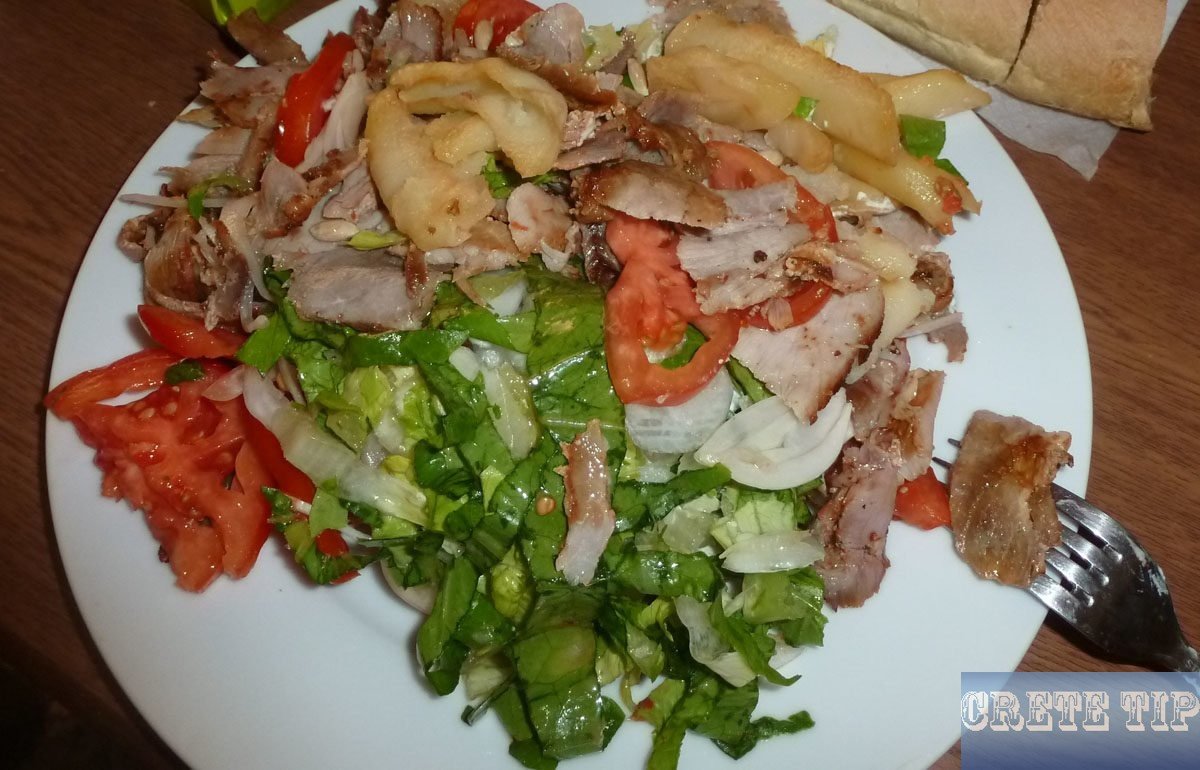Cretan Spices and Medicinal Plants: Ancient Remedies for Modern Wellness.

Crete’s rugged landscape is home to a rich array of aromatic herbs and medicinal plants. These natural treasures have been part of Cretan culture for centuries, playing key roles in the island’s cuisine and traditional medicine. The Cretan diet, known for its health benefits, relies heavily on these local herbs and spices to add flavour and nutritional value to dishes.
From oregano and thyme to sage and dittany, Cretan herbs are packed with antioxidants and other beneficial compounds. Many of these plants grow wild on the island’s mountains and are carefully gathered by experienced collectors. Locals use them not only in cooking but also as herbal teas and natural remedies for various ailments.
The use of Cretan herbs extends beyond the kitchen and medicine cabinet. They are also valued for their aromatic properties and are often used in cosmetics and fragrances. This diverse range of applications has helped preserve the island’s herb-gathering traditions, ensuring these plants continue to thrive in Crete’s unique ecosystem.
The Historical Context
Cretan spices and medicinal plants have a rich history dating back thousands of years. These plants played a crucial role in ancient medicine and daily life on the island.
Ancient Uses in Crete
Crete’s unique plants were prized for their healing properties in ancient times. Dittany of Crete, known as “erontas” or “diktamo”, grew on rocky cliffs and was used to treat wounds.
The Romans valued Cretan medicinal plants highly. After conquering Crete in 67 BC, emperors sent special “root cutters” to collect plants for export to Rome.
Cretan herbs were used in folk remedies passed down through generations. People relied on local plants to cure ailments and promote health before modern medicine.
Hippocrates’ Influence
Hippocrates, the famous Greek physician, had a big impact on Cretan herbal medicine. He taught doctors to use plants as natural remedies instead of magic or superstition.
Hippocrates wrote about many Cretan herbs in his medical texts. These writings spread knowledge of Cretan plants throughout the ancient world.
His teachings shaped how people used local plants on Crete for centuries. Hippocrates’ ideas blended with traditional Cretan folk medicine to create a unique healing system.
Which plants do older Cretans in particular collect in nature in winter?

In winter, many older Cretans – especially women – can be found in the wilderness and mountains collecting various herbs and plants. These foraging trips are a cherished tradition that connects them to their land and heritage.
One popular plant they seek is malotira, also known as Cretan mountain tea. This aromatic herb grows in rocky areas and is prized for its soothing properties.
Dittany of Crete, a rare endemic plant, is another favourite. Older locals carefully harvest it from steep mountainsides, valuing its medicinal uses.
Wild sage is also collected in winter. Its strong flavour and health benefits make it a staple in Cretan kitchens and traditional remedies.
Older Cretans look for wild thyme as well. This versatile herb is used in cooking and tea-making, and is believed to have immune-boosting effects.
Some common plants gathered include:
- Chamomile
- Fennel
- Oregano
- Rosemary
- St. John’s Wort
These winter foraging trips not only provide useful herbs but also keep older Cretans active and connected to nature. The practice helps preserve traditional knowledge about local plants and their uses.
The Flora of Crete
Crete boasts one of Europe’s richest plant ecosystems. The island’s unique climate and geography have led to a diverse range of native species, including rare herbs and flowers.
Endemic Plants
Crete is home to many plants found nowhere else in the world. The most famous is Dittany of Crete (Origanum dictamnus), also known as erontas. This fuzzy-leaved herb grows on rocky mountainsides and has been used for centuries to treat wounds and stomach issues.
Cistus, a flowering shrub, is another endemic plant. It produces a resin called labdanum, used in perfumes and traditional medicine.
The Cretan mountain tea (Sideritis syriaca) is a popular herbal drink on the island. It grows at high altitudes and is known for its mild, sweet flavour.
Wild Herbs
Crete’s wild herbs are a key part of its natural wealth. Sage and thyme grow abundantly on the hillsides, filling the air with their scent.
These herbs play a big role in Cretan cooking and folk medicine. Locals use them to make teas, flavour dishes, and treat common ailments.
Spring is the best time to see Crete’s wild herbs in bloom. After winter rains, the landscape bursts with colour as flowers and herbs come to life.
Herb collectors gather these plants by hand. They dry them naturally to preserve their flavour and medicinal properties.
Culinary Uses
Cretan herbs and spices play a vital role in the island’s cuisine, adding rich flavours and aromas to dishes. These botanicals contribute unique taste profiles that define Cretan cooking.
Herbs in Cretan Cooking
Cretan cooks use a variety of herbs to enhance their meals. Oregano is a staple, often sprinkled on salads, meats, and vegetables. Thyme adds a woody note to grilled meats and fish. Rosemary pairs well with lamb and potatoes. Marjoram lends a sweet, delicate flavour to tomato-based sauces.
Bay leaves are used in stews and soups for depth. Greek basil, with its anise-like taste, is perfect for pasta dishes and salads. Mint brightens up yoghurt dips and drinks. Fennel’s liquorice flavour complements seafood recipes.
Parsley is not just a garnish but a key ingredient in many Cretan dishes. It’s chopped finely and added to salads, meat dishes, and sauces for a fresh, herbal taste.
Flavour Profile Contributions
Each Cretan herb brings a distinct flavour to dishes. Oregano offers a slightly bitter, pungent taste with earthy undertones. Thyme provides a minty, earthy flavour with a hint of sweetness. Rosemary’s pine-like aroma and taste add complexity to dishes.
Marjoram has a delicate, sweet flavour similar to oregano but milder. Bay leaves impart a subtle bitterness and earthiness. Greek basil offers a mix of pepper, anise, and mint flavours. Mint adds a cool, refreshing note to both savoury and sweet recipes.
Fennel seeds contribute a sweet, anise-like taste. Parsley brings a clean, peppery flavour that balances rich foods. Cinnamon, though not native to Crete, is used in some sweet and savoury dishes, adding warmth and sweetness.
Medicinal and Therapeutic Applications
Cretan herbs and spices offer a wealth of health benefits, from traditional remedies to modern scientific studies. These plants contain powerful compounds that can aid in healing and promote overall wellness.
Traditional Remedies
Cretans have used local herbs for centuries to treat various ailments. Dittany of Crete, known as “erontas” in the local dialect, grows on mountainsides and in gorges. It has antiseptic and healing properties, often used to clean wounds and ease digestive issues.
Sage, another common Cretan herb, serves as a natural diuretic and helps with respiratory health. People brew it as a tea to soothe sore throats and coughs.
Thyme is prized for its antimicrobial qualities. Cretans use it to make infusions that aid digestion and boost the immune system.
Modern Botanical Studies
Recent research has shed light on the scientific basis for many traditional uses of Cretan herbs. Studies show that essential oils from these plants have strong antioxidant and anti-inflammatory properties.
A trial using an extract of three Cretan aromatic plants in olive oil showed promising results for treating viral infections. This highlights the potential for developing new medicines from these ancient remedies.
Scientists have also found that many Cretan herbs contain compounds that may help with wound healing and act as digestive aids. These findings support the long-standing use of these plants in folk medicine and point to new possibilities in modern healthcare.
Herbal Teas and Infusions
Cretan herbal teas offer a rich tapestry of flavours and health benefits. These infusions showcase the island’s botanical diversity and traditional wisdom.
Preparation Techniques
To make a proper Cretan herbal tea, start with fresh or dried herbs. Use about 1-2 teaspoons of dried herbs per cup of water. Boil water and pour it over the herbs in a teapot or mug. Let it steep for 5-10 minutes, depending on the herb and desired strength. Strain and serve.
For tougher plants like roots or bark, a decoction method works best. Simmer these in water for 10-15 minutes before straining. This extracts more of the plant’s properties.
Some popular Cretan herbs for tea include:
- Chamomile
- Greek Mountain Tea (Sideritis)
- Malotira (Cretan Mountain Tea)
- Dittany
- Sage
Health Infusions
Cretan herbal teas are known for their health-promoting properties. Chamomile tea is famed for its calming effects, aiding relaxation and sleep. It may also ease digestive discomfort.
Greek Mountain Tea, or Sideritis, is a staple in Cretan households. It’s rich in antioxidants and may support immune function. Locals drink it to ward off colds and flu.
Malotira, Crete’s own mountain tea, is prized for its soothing qualities. It’s often used to ease respiratory issues and promote general wellbeing.
Cultural and Economic Impact

Cretan spices and medicinal plants play a vital role in the island’s culture and economy. They shape local traditions, support agriculture, and attract tourists interested in natural remedies and unique flavours.
Cretan Agriculture and Trade
Spice and herb farming is a key part of Crete’s agricultural sector. Many families grow aromatic plants like oregano, thyme, and sage on small plots of land. These crops provide extra income and help preserve traditional farming methods.
Cretan herbs are sold in local markets and exported worldwide. The island’s unique plant varieties, such as dittany and malotira, are in high demand for their distinct aromas and potential health benefits. This trade boosts the local economy and helps spread Cretan culture globally.
Tourism and Education
Herb-focused tours and workshops are popular among visitors to Crete. Tourists can explore herb gardens, learn about plant uses, and join cooking classes featuring local spices. These activities create jobs and support small businesses across the island.
Some schools and universities in Crete offer courses on medicinal plants and traditional herbal remedies. These programmes help preserve local knowledge and train new experts in the field. They also attract students from other countries, bringing fresh ideas and cultural exchange to the island.
Conservation and Sustainability

Crete’s unique endemic plants face threats but efforts are underway to protect them. Sustainable farming helps preserve these species while supporting local communities.
Protecting Endemic Species
Crete is home to many rare plants found nowhere else. These endemic species are at risk due to habitat loss and over-harvesting. Conservation groups work to map and monitor plant populations. They set up protected areas to safeguard critical habitats. Seed banks store genetic material to preserve biodiversity.
Some key endemic plants include Cretan dittany and Cretan ebony. These have been used in traditional medicine for centuries. Now, strict rules limit wild collection. Instead, cultivation projects help meet demand sustainably.
Sustainable Farming Practices
Farmers on Crete are adopting eco-friendly methods to grow herbs and spices. These practices protect the land and native plants. Organic farming avoids harmful chemicals. It keeps soil healthy and supports local wildlife.
Crop rotation and mixed planting boost yields naturally. Drip irrigation saves water in Crete’s dry climate. Some farmers work with scientists to study best practices for endemic species.
Sustainable farming also supports the famous Cretan diet. It ensures a steady supply of fresh, local herbs. This helps preserve culinary traditions while protecting the environment.
Frequently Asked Questions

Crete boasts a rich variety of herbs and spices used for both culinary and medicinal purposes. These plants play a key role in the island’s culture and traditions.
Which herbs are indigenous to Crete and are used for medicinal purposes?
Dittany of Crete is a famous native herb. It grows on rocky cliffs and mountains. People use it to heal wounds and ease digestive problems.
Malotira, also called mountain tea, is another local plant. It helps with colds and breathing issues.
Sage and thyme are common Cretan herbs with healing properties. They can soothe sore throats and boost the immune system.
What is a comprehensive list of Cretan spices?
Cretan spices include oregano, thyme, rosemary, and sage. These are widely used in cooking.
Bay leaves, cumin, and coriander are also popular. Locals use them to add flavour to various dishes.
Fennel seeds and caraway are less common but still important in Cretan cuisine.
Which Greek herbs and spices are essential in traditional Cretan cooking?
Oregano is a must-have in Cretan kitchens. It’s used in many dishes, from salads to meat.
Thyme adds a distinct flavour to grilled meats and vegetables. It’s also used in marinades.
Rosemary is often paired with lamb and other roasted meats. It gives a lovely aroma to dishes.
What are considered sacred herbs and spices in Greek culture?
Basil is seen as a holy plant in Greek culture. Many households keep a pot of basil near the entrance.
Oregano is thought to bring good luck. People sometimes use it in religious ceremonies.
Sage is believed to have cleansing properties. It’s used in some traditional rituals.
Can you identify popular herbs found in Cretan markets for culinary use?
Cretan markets often sell fresh bundles of oregano, thyme, and rosemary. These are staples in local cooking.
Mint is also common. People use it in salads and to make refreshing drinks.
Parsley and dill are popular for adding flavour to various dishes. They’re often sold in small bunches.
What are some unique gifts from Crete related to local spices and medicinal plants?
Dried herb mixes are popular gifts. They often include oregano, thyme, and other local herbs.
Essential oils made from Cretan plants make lovely presents. Lavender and sage oils are common choices.
Tea blends using local herbs like dittany or mountain tea are unique souvenirs. They offer a taste of Cretan tradition.







